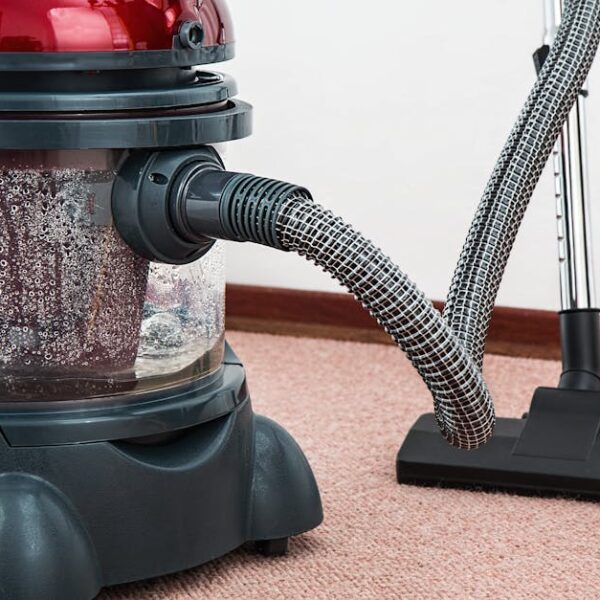Stepping into laundry day, it’s crucial to understand your trusty sidekick – the washing machine – and all of its components. One such essential part is, you guessed it, the detergent drawer. So, let’s delve into this vital component, shall we?
Understanding Your Washing Machine’s Layout
From sleek, digital models to the old-school, rotary dial ones, the trustworthy washing machine has become a household essential. Within its sturdy shell, several components work together to make sure your clothes come out spotless. There are internal components like the drum, agitator, or impeller, and then there are external ones such as the control panel, lid, or door. However, today’s focal point is the detergent drawer, a compartment that bears the cleaning load.
The detergent drawer houses the cleaning agents and fabric softeners that your machine dispenses at the right time during the wash cycle. The location might vary, but it’s usually in an easily accessible spot on the machine. Familiarizing yourself with this component can enhance your laundry routine. Mastering your machine’s layout? Now, that’s a life skill worth noting!
- Major Components:
1. Control Panel: The dashboard of your machine.
2. Drum: The compartment where you load your clothes.
3. Detergent Drawer: Houses the cleaning substances.
- Best Practice: Always consult your machine’s user manual for a guided tour around its different components.
Cleaning Power in a Drawer: Understanding the Detergent Drawer
Think of the detergent drawer as the magic box from where cleanliness emerges. It’s essentially a compartment into which you dispense the detergent and other laundry aids before starting your wash cycle. This drawer segregates and releases these cleaning agents at appropriate times to ensure efficient cleaning.
Its accurate usage is critical for efficient washing; Over-dosing can lead to wastage and poorly rinsed clothes, while under-dosing might result in an ineffective wash.
- Pro Tip: Measure your detergent based on the load size and soil level for effective usage.
- Comparison:
– Directly Adding Detergent in Drum:
Pros: Offers quick washing solution.
Cons: May result in uneven distribution.
– Using Detergent Drawer:
Pros: Ensures systematically timed and evenly distributed detergent.
Cons: Requires more preparation time.
Playing Hide and Seek with the Detergent Drawer
While your detergent drawer isn’t literally playing hide and seek, its location might at times feel like a little guessing game. Fear not, though, because it is usually located at a quickly accessible area. Some machines have the drawer on their top, while others could have it on the front side. Reaching the right spot is ultimately contingent on the make and model of your machine. So, the next time you’re fumbling around, remember to check these spots.
- Checklist:
1. Check the top left corner.
2. Look for a handle or notch on the front side.
3. When in doubt, refer to the user manual.
- Best Practices: Be gentle while pulling out the drawer; harsh tugs can damage it.
Join me in the next part as we delve deeper into the compartments within the detergent drawer and how to optimally use them. So stay tuned, and remember the golden rule – laundry is less a chore and more an art!
Decoding the Detergent Drawer Compartments
Your detergent drawer is not just a place to pour in detergent aimlessly. It’s a well-thought-out system with different compartments for various cleaning substances. The compartments could differ in number and size based on different machine types, but the primary compartments are detergent and fabric softener. Generally, there are three compartments, marked as I, II, and *, each dedicated to a specific requirement and cycle.
Understanding and using these compartments can optimize your machine’s performance and contribute to a cleaner, fresher load of laundry. On the flipside, not using them correctly might lead to subpar laundry results.
- Compartments & Their Usage:
1. I: Pre-Wash Detergent.
2. II: Main Wash Detergent.
3. *: Fabric Softener.
- Pros & Cons:
– Correct Usage:
Pros: Contributes to efficient washing and appropriate use of cleaning agents.
Cons: May require more time and attention.
– Incorrect Usage:
Pros: Faster if you are in a rush.
Cons: Results in inadequate cleaning.
Detergent Drawer Care and Cleaning: Not All Heroes Wear Capes
While the detergent drawer quietly does its job, it needs your attention too. Regular maintenance and occasional cleaning can ensure that your detergent drawer is always ready for your next laundry day. This would mean no detergent build-ups, mold, or unpleasant smells that could affect your clothes.
Cleaning the detergent drawer might seem complicated, but your careful efforts can actually enhance its performance and prolong your machine’s lifespan.
- Pro Tip: Clean your detergent drawer every month or after 30-40 wash cycles.
- Checklist:
1. Remove the detergent drawer gently.
2. Clean it meticulously under warm running water.
3. Use a toothbrush to scrub off stubborn detergent or mold.
4. Air dry or use a cloth to wipe off any moisture.
And, there you have it—a complete walkthrough of the unassuming detergent drawer in your washing machine. Taking the time to understand your machine and its various parts can really make your laundry routine more efficient and effective. So go on, embrace the art of laundry, armed with your newfound machine knowledge.
Key Takeaway:
- The detergent drawer is a crucial component of a washing machine that houses and systematically dispenses cleaning agents and fabric softeners during the wash cycle.
- The location of the detergent drawer can vary based on the make and model of the washing machine, but it is usually in a quickly accessible area.
- The detergent drawer typically houses various compartments for different cleaning substances which hold essential roles in the washing process.
- Correct usage and regular maintenance of the detergent drawer can promote efficient washing, prolong machine lifespan, and prevent issues such as over-dosing, poorly rinsed clothes, etc.
The art of laundry is not as intimidating as it initially seems. With a good understanding of your washing machine, particularly the detergent drawer, you can make your laundry routine more efficient and effective. Don’t shy away from delving into your user manual or seeking advice when unsure. Keep in mind – every minute invested in understanding your machine is a step towards better care for your clothes.
How Does the Weight of Your Washing Machine Affect the Detergent Drawer Usage?
The weight of your washing machine plays a crucial role in detergent drawer usage. Heavier machines often indicate more robust build quality and efficiency. When considering the type and amount of detergent, it’s important to check how much does it weigh; higher capacity machines may require different formulations for optimal results.
FAQs
Q: Can I pour detergent directly into the drum rather than using the detergent drawer?
A: Yes, you can. But this may lead to uneven distribution of the detergent. Using the detergent drawer ensures systematically timed and evenly distributed detergent, promoting a better wash cycle.
Q: What happens if I misplace or misuse the compartments in the detergent drawer?
A: Misusing the compartments may result in an inadequate cleaning process as each compartment is designed for a specific requirement and cycle. If misplaced, it is best to refer to your user manual or seek professional help.
Q: I’ve found mold in my detergent drawer, what should I do?
A: Remove the drawer and clean it under warm running water, use a toothbrush to scrub off the stubborn mold. This should be part of your regular maintenance, ideally cleaned every month or after 30-40 wash cycles.
Q: How do I know how much detergent to put in the detergent drawer?
A: You should measure your detergent based on the load size and soil level for effective usage. Over-dosing can lead to wastage and poorly rinsed clothes, while under-dosing may result in an ineffective wash.
Q: Does the detergent drawer need any special cleaning solutions?
A: Typically, warm running water and a soft brush should be enough. But if the drawer is heavily soiled, using a mild detergent or specialized cleaning solutions can help. Always check your washing machine’s manual for advice.
We hope you find this information useful! Feel free to share this article, and explore more posts on our website to embrace the art of laundry.












